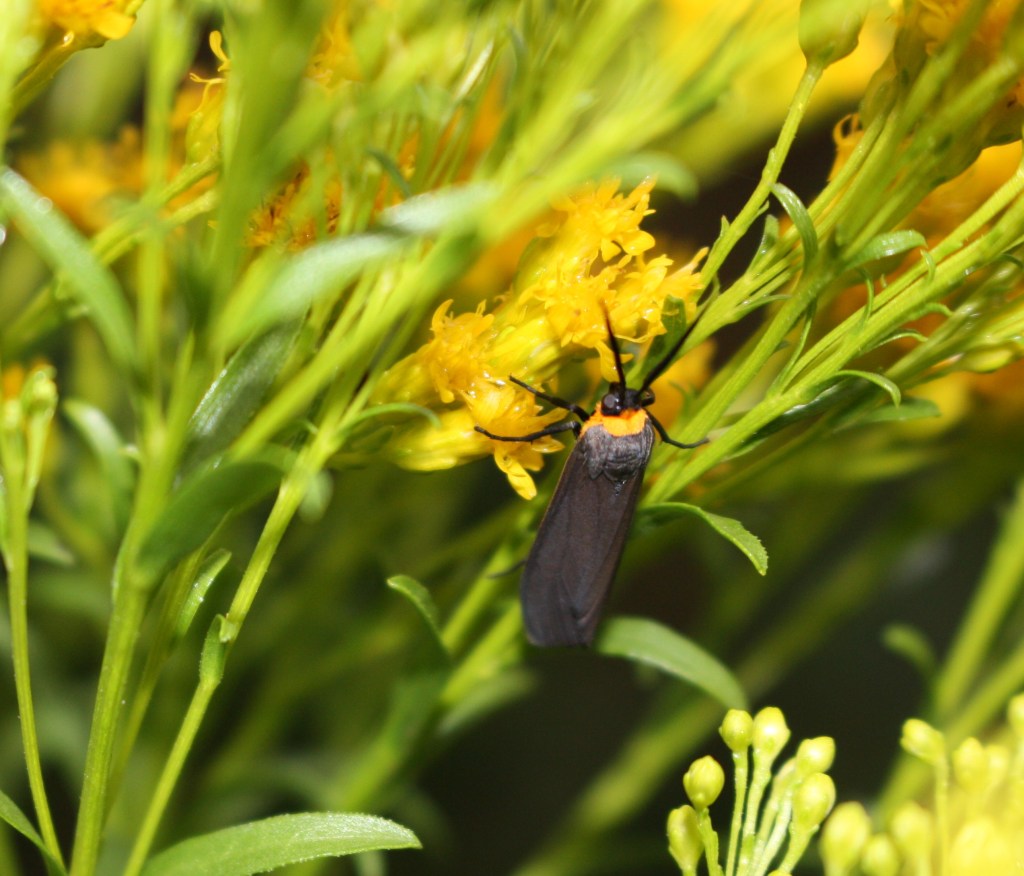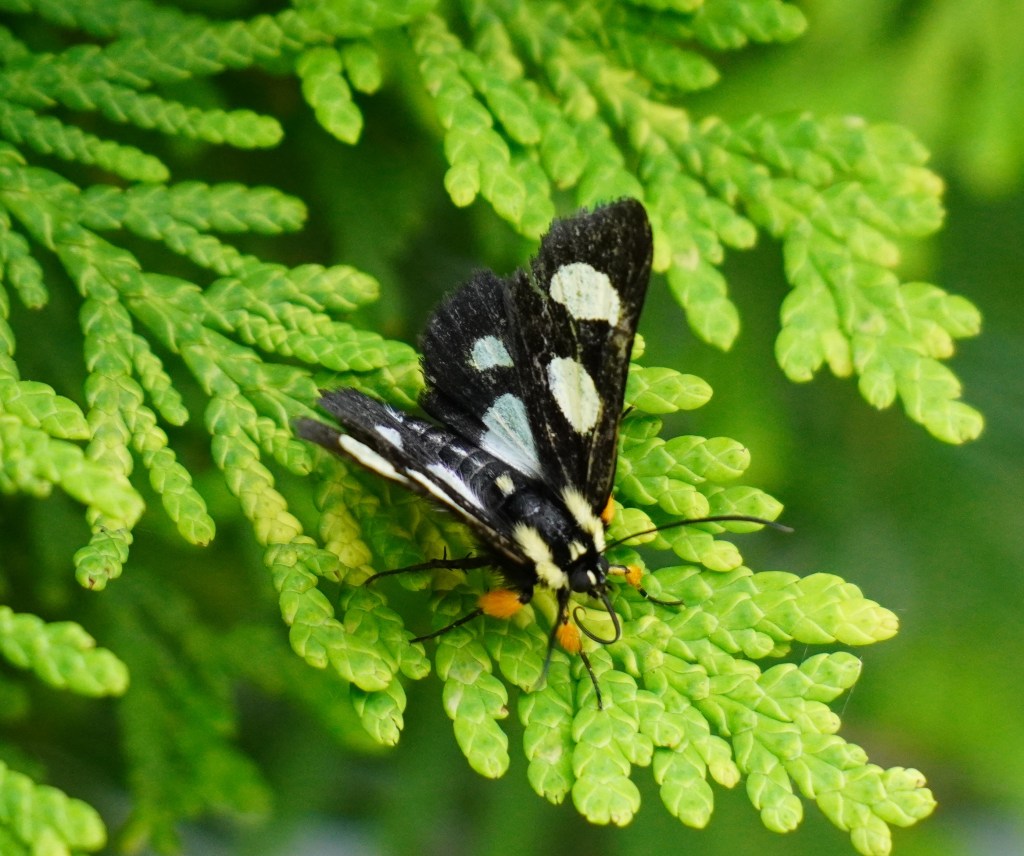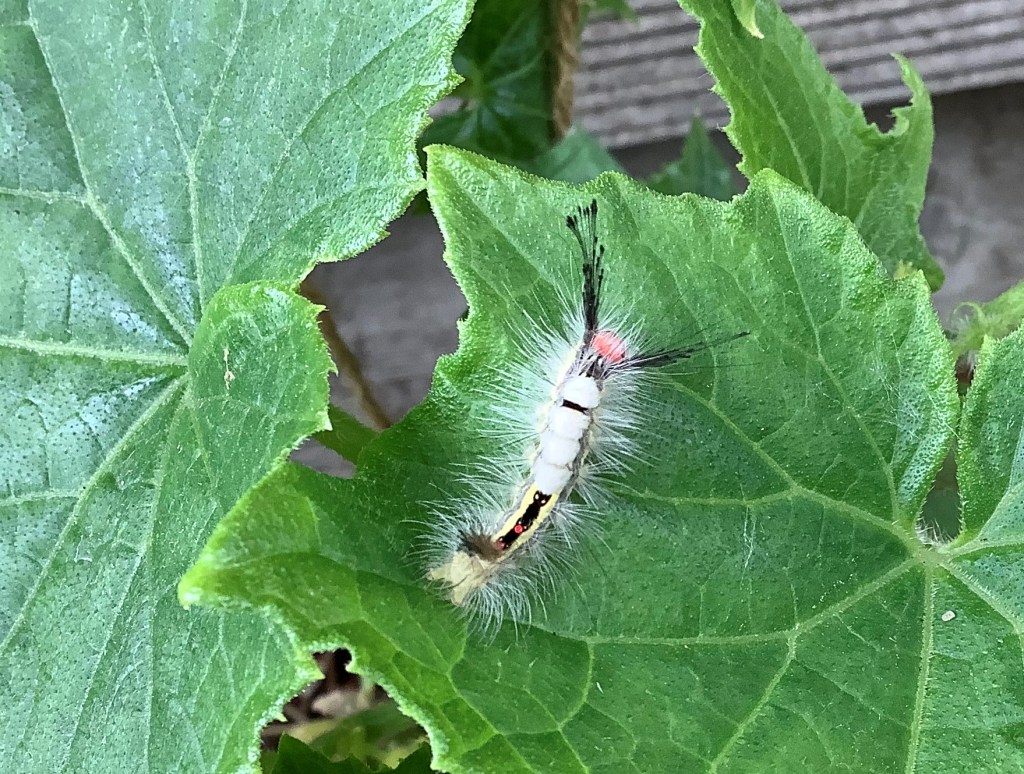Last summer, I began to notice more moths in the garden. Although I haven’t seen any large, spectacular ones, the moths I spotted have been diverse and interesting. Some don’t even look like moths.
Unseen, but important pollinators
Recently, UK researchers studied what plants moths visit and how they behave, compared to more well-known daytime pollinators (Moths do the pollinator night shift — and they work harder than daytime insects). Moths transport pollen on their tongues, as well as on their furry bodies, just like bees. They also visit lots of different flowers. This study shows that the important role moths play in pollination has been underestimated.
Here are a few of the moths that visited my garden, and that I caught on camera.
Mothing
Did you notice anything strange about my moth photos? They were all taken during the day. I jostled some of these moths from the daytime sheltering spots while I was working in the garden. They swiftly fluttered off to hide again under a leaf or inside a shrub. Otherwise, I would never have seen them. While most moths are active at night, some are out during the day, such as the Hummingbird Clearwing Moth (above at the bright pink phlox), or they start their night shift in the evening, like the Nessus Sphinx Moth (I didn’t get a photo of that one).
The best way to see moths at night, besides keeping your porch light on, is to try mothing. All you need to do is go outside after dark, hang a light-coloured sheet, and place a light behind it. Moths that are attracted to the light will rest on the sheet for you to examine. For more details about mothing, see the National Moth Week Finding Moths page. Now that I’m taking insect photos, I’d like to give this a try. Maybe after the skunk family that lives next door moves away. I wouldn’t want to surprise them their nightly adventures.
Bird food
Besides their work as pollinators, moths have another critical role — as food for birds, especially baby birds. There are thousands of different kinds of moths, and each female lays hundreds of eggs. That’s a lot of caterpillars. We don’t notice them (except for invasive introduced species like Gypsy Moth caterpillars) because so many are eaten by birds. They are the perfect, soft, protein-packed food for tiny chicks. Entomologist Douglas Tallamy, in his book Bringing Nature Home, estimates that it takes at least 4,000 caterpillars to feed a nest of baby Chickadees. Also, there are many kinds of songbirds, like warblers, that eat caterpillars and other insects as adults too.
Most caterpillars can only eat leaves of specific host plants. Usually the host plants are native plants, especially trees. So, without the native plants, there won’t be native caterpillars. Without the caterpillars, there won’t be songbirds. I’ve been using Bringing Nature Home as a guide for adding native plants to my yard that will host the most caterpillars, and then feed the most birds.
Attracting moths to your garden
While butterflies use their eyesight to find nectar plants, moths rely on their sense of smell. If you’d like to attract more moths to your garden, they find white or pale-coloured flowers particularly appealing, especially when have an open cup or tube shape, and are scented. They will also visit many other flowers.
I am encouraging Evening Primrose to self-seed in my garden because it is a moth favourite. I actually started growing this plant so that the moths might also attract bats to our yard. Some other native nectar flowers to include are Nicotiana, Fireweed, Bergamot, and white Gentian. I saw several daytime moths visiting blooms on our Basswood tree, such as the Spear-marked Black Moth above. Some non-native options include Clover, Primroses, Wallflowers, Sweet Rocket (may be invasive), Scabious, Thyme and Marjoram.














you captured such unique images…loved the unique explanations too….well done.
LikeLike
Hello Admin,
Your blog seems really useful for us. We also want to draw your attention to our Starting a Vegetable Garden’. You can get more information at https://oakia.com/starting-a-vegetable-garden/?ref=ra
#gardening #oakia.com#vegetablegarden #garden
LikeLike